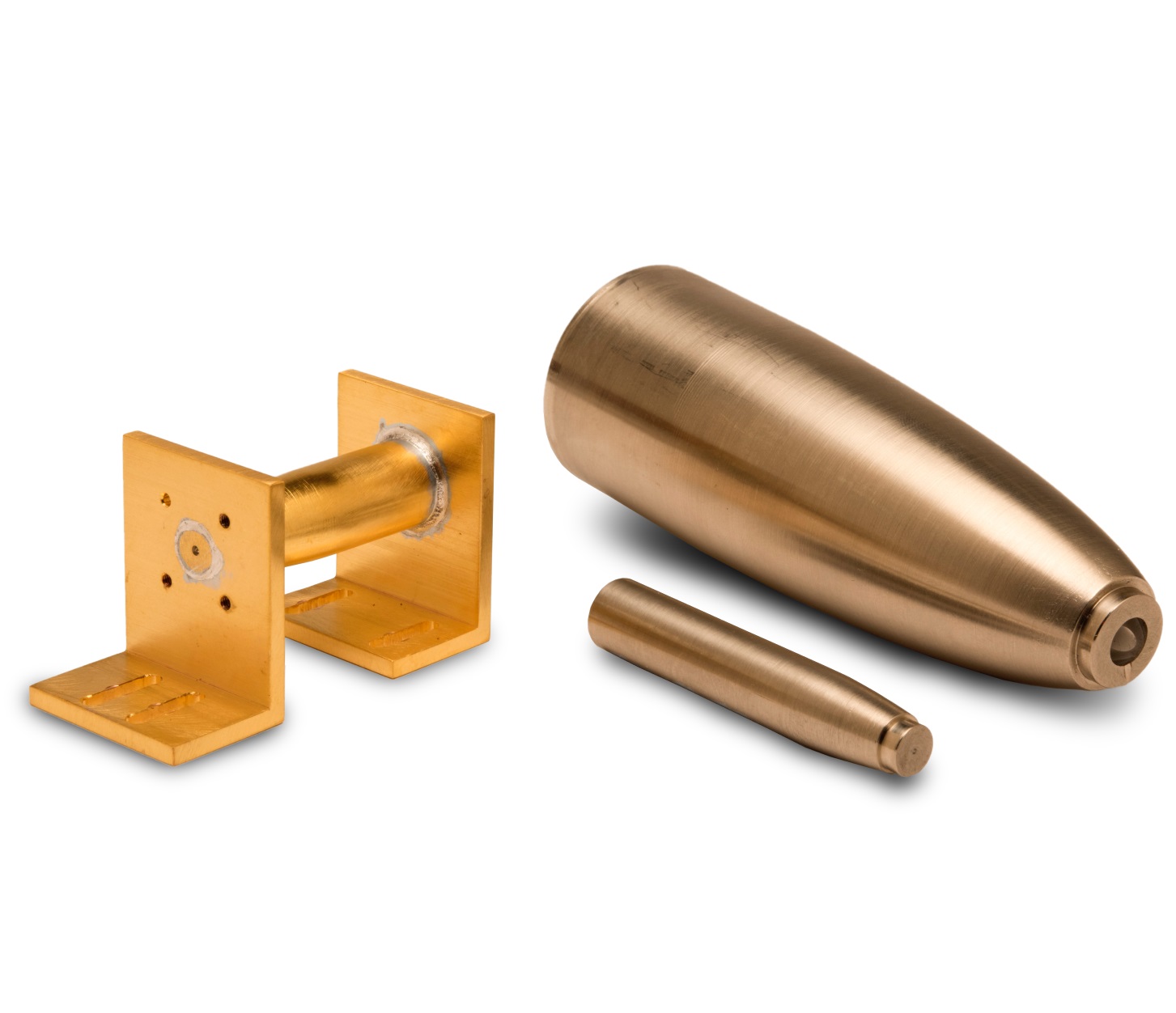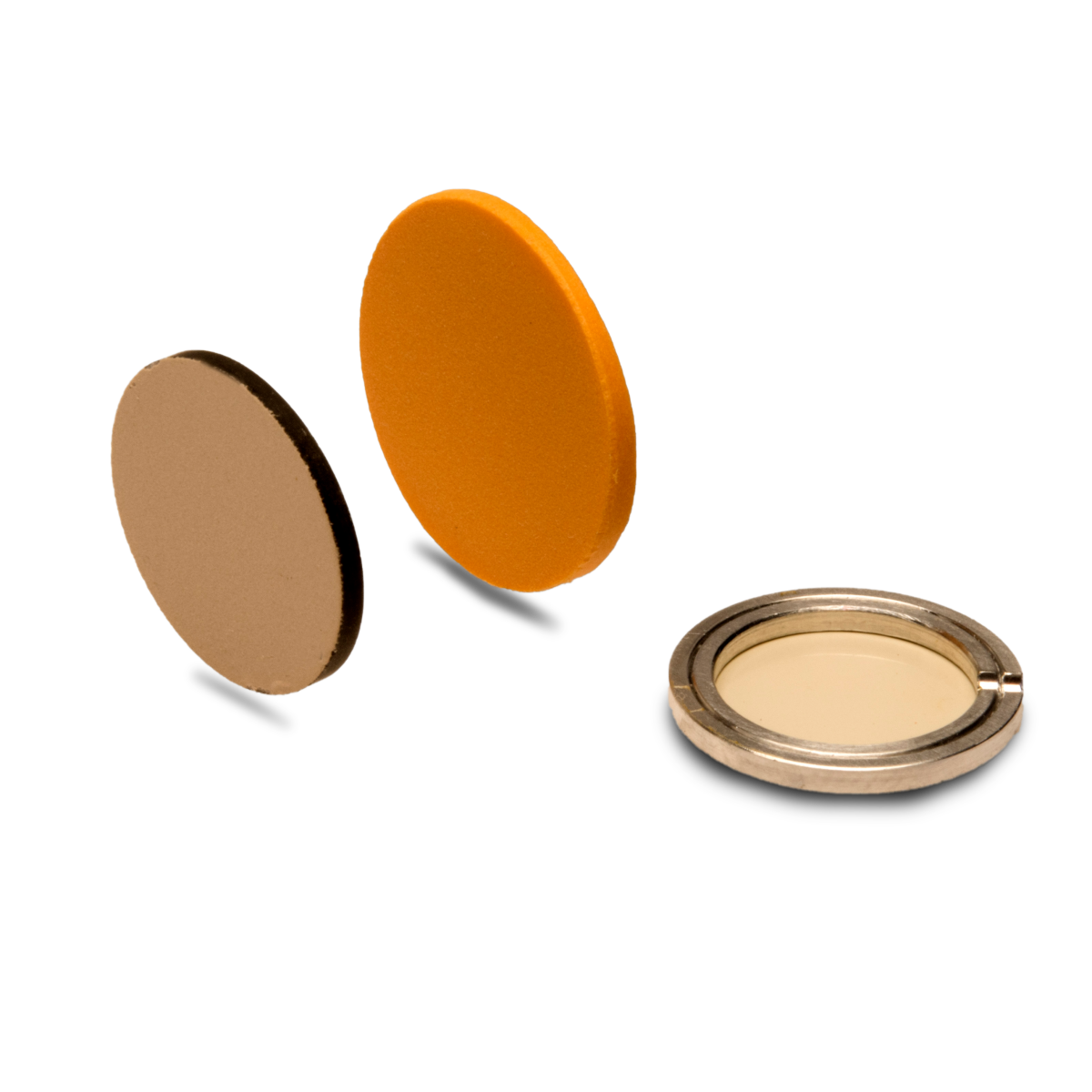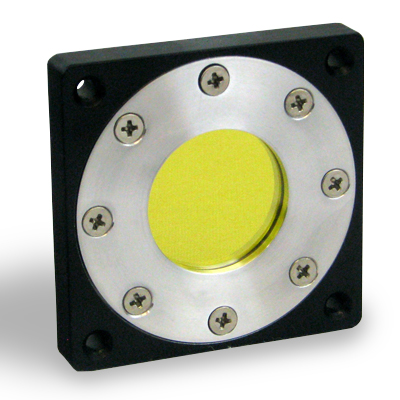
Winston Cones
We offer a comprehensive selection of Winston cones in either our standard gold coated nickel or non-magnetic gold coated copper. Custom sizes can be made to meet a particular entrance/exit aperture and f#.
These condensers are designed for maximum concentration of far IR and submillimeter radiation. In side-by-side performance tests Winston cone optics offered a substantial improvement in collection efficiency compared to spherical/parabolic mirror optics when using identically shaped detectors.
Description
A detector is placed in a shaped cavity at the rear of the cone condenser. The cavity and collector are directly coupled to form a compact system that is easily aligned and well suited to arrangement in tightly packed detector systems. The cone is constructed from nickel or copper using an additive manufacturing electroforming process, the finished product is gold-plated to enhance reflectivity and thermal cooling.
Operation
- Concentrates incoming radiation onto a detector that is smaller than the field aperture
- Restrict the field of view of the detector
- Distribute the incoming energy uniformly across the detector
Features
- Over 50 stock models
- Custom designs available

Far IR Filters
Our high performance Far IR filters use anti-reflective and powdered crystal coatings to reduce reflection losses normally found in materials used in far IR optics. Far IR filters includes far IR low pass, wide-band, and medium-band filters.
Description
The filters utilize the unique characteristics exhibited by crystalline materials when they are cooled to cryogenic temperatures. Even though the cut-on of a cooled crystal can be very sharp, reflection losses of 20%-50% are found for the materials commonly used in far-IR optics. These losses are reduced by applying a single or multi-layer, anti-reflection coatings of polyethylene that give transmissions of 90% or better over selected spectral regions. The useful life of hydroscopic windows is also extended by applying a protective coating of polyethylene.
Our Far IR filters use either a crystal or polyethylene base laminated with anti-reflection and powered crystal coatings which reduce reflection losses. The problem of blocking near-IR leaks is solved by using powder scatter layers of transparent particles.
The transmission characteristics of a layer of dielectric powder is determined by the size, distribution, index of refraction, and thickness of the particles. Proper designs provide transmissions from < 0.1% to 80% over wavelength intervals as short as 1.5 – 2.0 octaves.
Crystal substrates are available uncoated or with anti-reflection coating, scatter layer coating, or both. Multiple filters are combined to achieve specific band-pass characteristics or other special features.
Features
- Wide selection of materials
- Pre-mounted in window flange
- Wedging, powder layers, and protective coatings options

Vacuum Windows
Vacuum windows can be wedged or coated with either a diamond powder layer or an anti-reflective protective polyethylene film. Windows are mounted in a gold-anodized aluminum flange. The flange contains an “O” ring vacuum seal with a 0.75 inch clear aperture.
Indium seals for high-altitude applications and windows with larger apertures are also available.
Features
- High performance
- Wide selection
- Anti-reflective coatings and/or scatter layers
